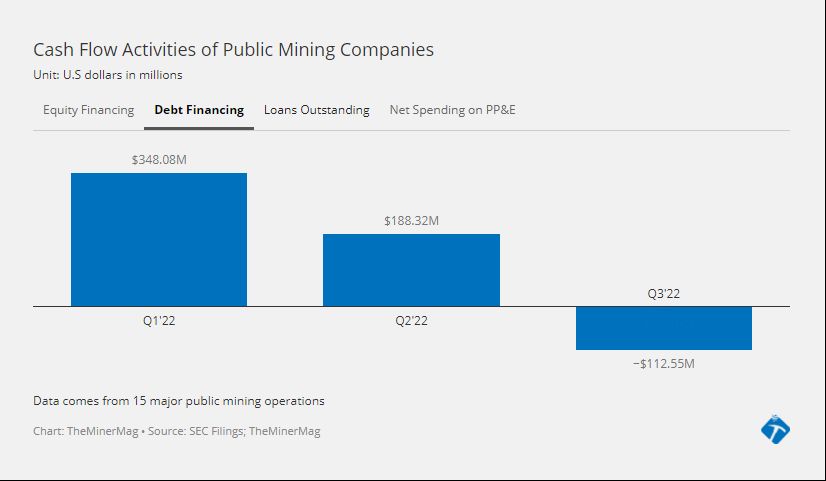Cash-strapped Bitcoin miners are reducing loans and scaling back their operations as the crypto-mining industry continues to weather a plunge in the digital asset’s price.
(Bloomberg) — Cash-strapped Bitcoin miners are reducing loans and scaling back their operations as the crypto-mining industry continues to weather a plunge in the digital asset’s price.
During the historic bull run in late 2021, miners raised billions of dollars in debt financing to fund their expanding operations. But since the crash early last year, publicly traded miners are refinancing and selling coin reserves as well as equity to repay loans and cover operational costs.
“Miners are trying to deleverage to avoid margin calls or an imminent liquidity crunch if Bitcoin drops below a certain price point,” Wolfie Zhao, an analyst at crypto-consulting firm BlocksBridge, said.
Miners like Marathon Digital Holdings Inc. have raised hundreds of millions of dollars in loans backed by the coin from crypto-friendly banks such as Silvergate Capital Corp., which has been reeling from the crypto industry meltdown.
Core Scientific Inc., the largest Bitcoin miner by computing power, was the first major public mining company to declare bankruptcy in December, citing falling Bitcoin prices and soaring energy costs for its cash-flow issues. The Austin, Texas-based company is trying to work out a plan to repay its creditors.
Last month, Marathon eliminated its $30 million revolver debt, increasing its unrestricted cash to over $100 million, according to BlocksBridge.
Money raised from debt financing by 15 major public mining companies has been shrinking since the first quarter of 2022, and for the first time in the third quarter it contracted $112.6 million, according to data compiled by BlocksBridge. That’s compared to a total of $348 million and $188 million in the first and second quarters, respectively, said BlocksBridge. Overall, net spending on mining infrastructure fell 77% to $180 million in the third quarter, compared to the prior quarter, the firm’s latest data revealed.
Any sudden drop in the price of Bitcoin can lead to a major liquidity crunch. Bitcoin rose as much as over $45,000 in March 2022 but fell a month later to $29,000 as cryptocurrency Terra Luna crashed, wiping out about $40 billion in the crypto market. The Federal Reserve’s tightening monetary policy and implosions of big digital-asset firms such as hedge fund Three Arrows Capital and crypto exchange FTX have also weighed on the token’s price throughout last year. Bitcoin tumbled by about 65% in 2022.
Some miners like Riot Platforms Inc. and Bitfarms started selling their coin reserves last year to boost liquidity. Marathon, which tends to hold on to its mined coins, still has 12,232 in Bitcoin on its balance sheet. About 36% of the reserve is restricted, secured against its remaining loans as of Dec. 31, according to BlocksBridge.
Core Scientific and Riot sold equity to raise money amid the slump. Argo Blockchain proposed issuing shares last year, though the offering didn’t take place.
(Updates the final paragraph to note that Argo proposed issuing shares last year, though the offering didn’t take place.)
More stories like this are available on bloomberg.com
©2023 Bloomberg L.P.










